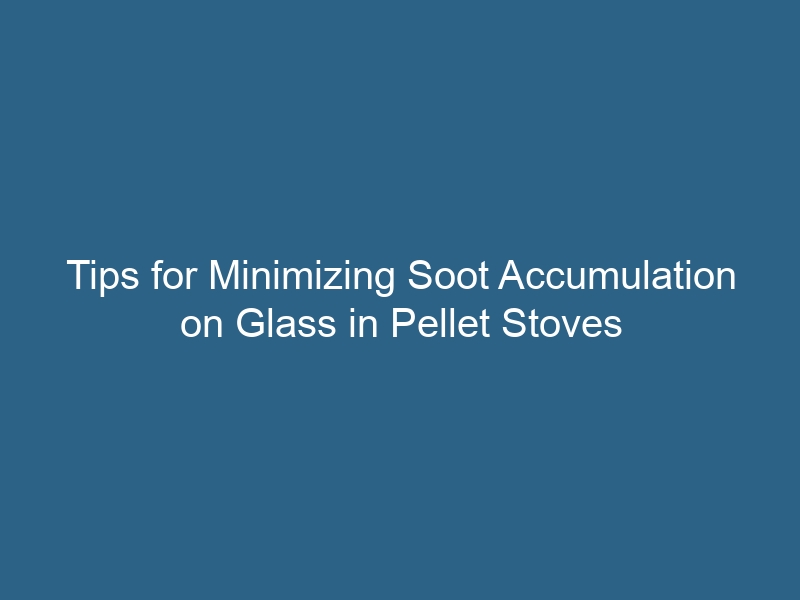Quck answer
Soot build-up on glass in pellet stoves can be reduced by following a few simple steps:
1. Use high-quality pellets: Low-quality pellets tend to produce more soot. Choose pellets made from hardwood and without additives.
2. Adjust the air intake: Proper air intake helps in complete combustion, reducing soot production. Follow the manufacturer’s instructions to adjust the air intake correctly.
3. Clean the stove regularly: Regular cleaning of the stove, including the glass, prevents soot build-up. Use a non-abrasive glass cleaner and a soft cloth to clean the glass.
4. Burn the stove at high temperatures: Burning the stove at high temperatures for a short period of time helps burn off any accumulated soot.
5. Use a stove fan: A stove fan helps distribute heat evenly, reducing the likelihood of soot build-up on the glass.
Using a pellet stove to heat your room is an eco-friendly choice. If you notice excessive soot buildup, it may be due to the type of fuel being used. Consider the fuel source if the glass on your pellet stove becomes cloudy quickly.
Advantages of Pellet Stoves
Pellet stoves are highly efficient, with only 10 percent of heat being lost during operation, according to Energuide. In contrast, a wood-burning stove can lose up to 50 percent of its heat.
The blower system in a pellet stove provides an active smoke extraction mechanism. The smoke is directed through a narrow tube, eliminating the need for a specialized chimney. There are three types of pellet stoves available:
- Stove — a manually loaded pellet heater suitable for heating a room.
- Boiler — can serve as the primary heat source for an entire building, with automatic pellet loading.
- Stove-Boiler — a versatile heater that warms the room while also providing hot water for a radiator.
Significance of Pellet Quality
The quality of the fuel used in the pellet stove, as well as the frequency of usage, determines how often the stove’s glass needs to be cleaned. The fuel is the primary cause of soot buildup and should be chosen and used carefully. Ideally, the pellets you select should produce minimal ash and clinker residue while efficiently heating the space.
According to Home Tips, certain pellet brands may generate more soot than others. Higher-priced pellets generally burn hotter and cleaner compared to lower-priced options. Experiment with different pellet brands to find the one that suits your needs and specific pellet stove. Top-fed pellet stoves typically require higher-quality pellets, while bottom-fed stoves can handle lower-quality pellets, albeit with a potentially larger ash pile to clean.
Cloudy Glass in Pellet Stoves
Regular maintenance is essential to keep the pellet stove functioning properly throughout the year. Cloudy glass can hinder your ability to monitor the fire’s progress and identify any issues. After each use or at least once a week, clean the glass front with a pellet stove glass cleaner to prevent soot buildup.
Use an ash vacuum for quick and easy removal of ash. This reduces the need to clean up spilled ash or prevent it from becoming airborne every time you scrape and scoop the dirty pile of used pellets. Clean the ash trap or drawer once a week if you use the pellet stove daily to minimize cloudy glass problems. While cleaning the ash trap, check for soot accumulation on visible surfaces of the stove and remove it with a wire brush.
When to Seek Professional Assistance
It is advisable to have your pellet stove and chimney inspected by a professional annually, preferably before the heating season begins. A professional can clean the stove’s flue and ensure that the chimney is securely installed.


